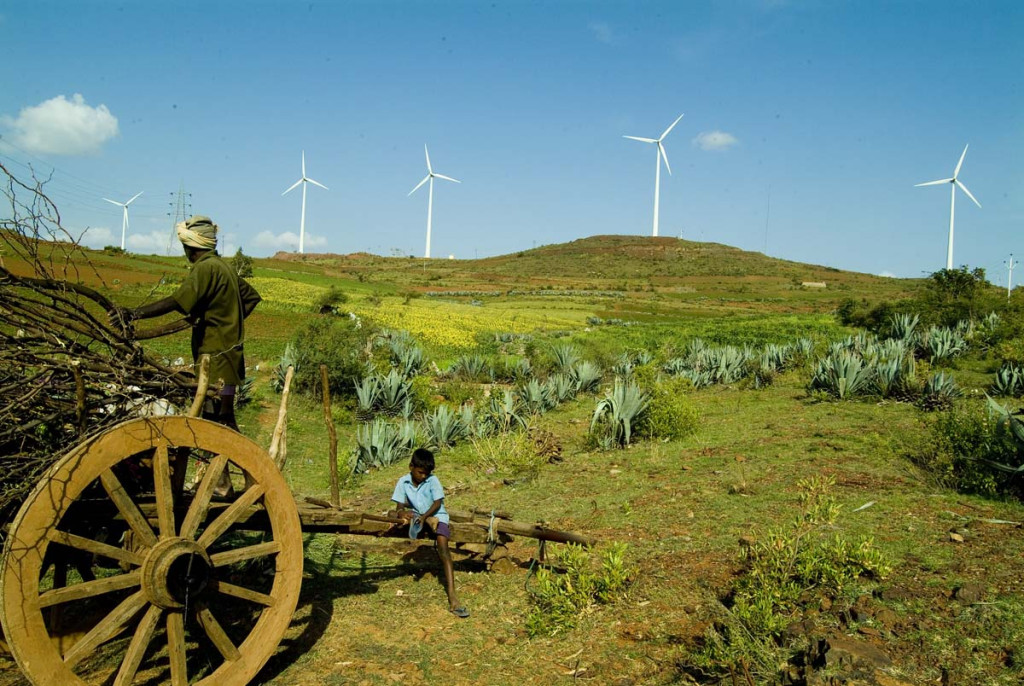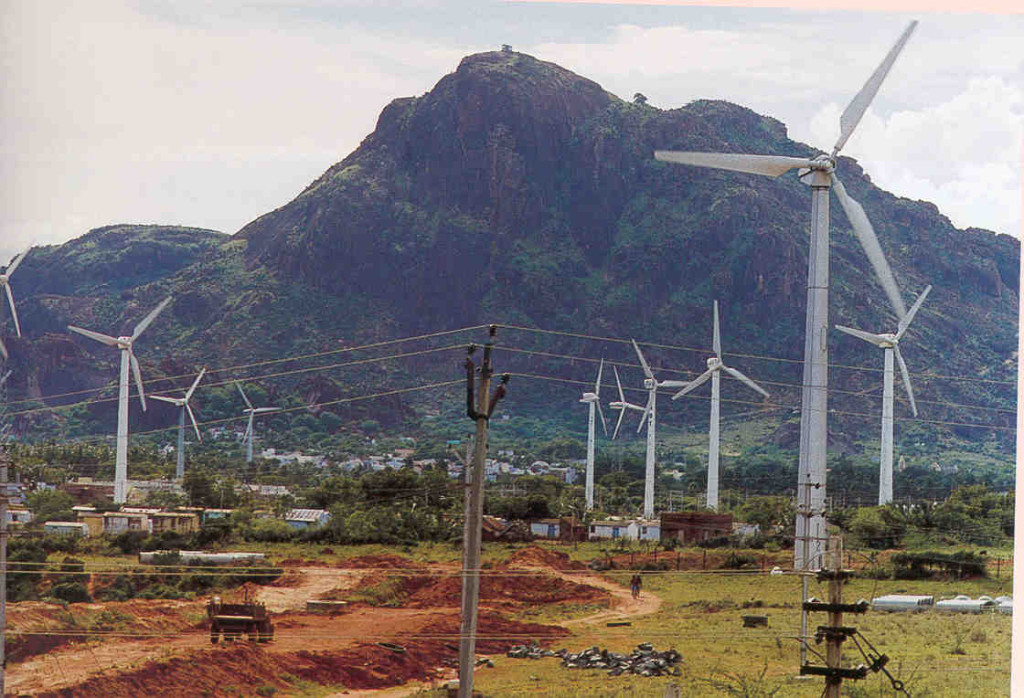 The total onshore wind energy potential in India is over a hundred gig watts of which barely 3 percent has been harnessed so far. There’s a long way to go before this huge energy potential gets even half utilized although it is also true that many states especially in peninsular India are already in the process of setting up huge wind farms. Tamil Nadu, which has the highest wind power generating potential among all the states of India, has already installed over 7,253 MW which is over 35% of the total installed capacity in the country.
The total onshore wind energy potential in India is over a hundred gig watts of which barely 3 percent has been harnessed so far. There’s a long way to go before this huge energy potential gets even half utilized although it is also true that many states especially in peninsular India are already in the process of setting up huge wind farms. Tamil Nadu, which has the highest wind power generating potential among all the states of India, has already installed over 7,253 MW which is over 35% of the total installed capacity in the country.
Tamil Nadu is located ideally at a point where both the Southwest and Northeast Monsoon winds ‘tunnel’ through the sate creating considerable wind speed and intensity which is ideal for wind farming. However, the state’s wind energy planners overlooked certain critical areas in their hurry to harness this wind energy bounty. They did not set up the infrastructure for evacuating all of the generated power simultaneously into the grid and consequently the state suffered power outages. In renewable energy lexicon, power ‘evacuation’ refers to the process of transferring the generated power to the grid.
Many wind farms were shut down because of this infrastructure bottleneck. The net result of such poor planning by the wind energy strategists in Tamil Nadu is that the state lost out heavily in attracting investments in its wind power sector. As against a total investment of around Rs. 1,500 crores for setting up 1000 MW wind power capacity in the period 2011-12, barely Rs. 600 crores have been invested so far this year for installing around 100 MW of wind power capacity. This flight of capital got diverted to states like Gujarat and Rajasthan which are way behind Tamil Nadu in wind energy potential.
Chief Minister Jayalalitha knows that Tamil Nadu can’t afford to let this situation to drift for much longer. She is focusing hard on plugging the infrastructure gap to not just create the right conditions for reviving investments into the sector but also ensure optimum utilization of the generated power. Her state lost out on the opportunity to utilize the total power generated by the wind farms which led to massive power outages in different parts of the state with definite implications on her electoral prospects. Overall, the cost of such a critical error proved to be quite steep.
At present, wind energy supplies an average of up to 20% of the state’s total power annually. During peak seasons when the wind speed and intensity is at its highest, the contribution to the state’s power grid goes up to nearly 40% which speaks very highly about Tamil Nadu’s carbon footprint. Other renewable energy options like solar and biomass haven’t been effectively utilized by Tamil Nadu as yet. Both have tremendous potential and together with wind power, could push the contribution of clean energy in the state’s entire power production to well past two-third.
India is yet to begin harnessing offshore wind power which has more potential than the onshore variant. The wind speed and intensity is always higher in the high sea and consequently the power generating potential is always higher. In fact, the offshore wind energy potential in India is thrice as much as the onshore variant giving the country a total wind energy potential of over 400 GW. Understandably, the cost of setting up wind farms in the sea is much higher. At present, India is just about testing the waters as far as offshore wind power generation is concerned. Tamil Nadu again is at the forefront with a couple of 1 GW wind farms each, off the coasts of Rameswaram and Kanyakumari respectively.




